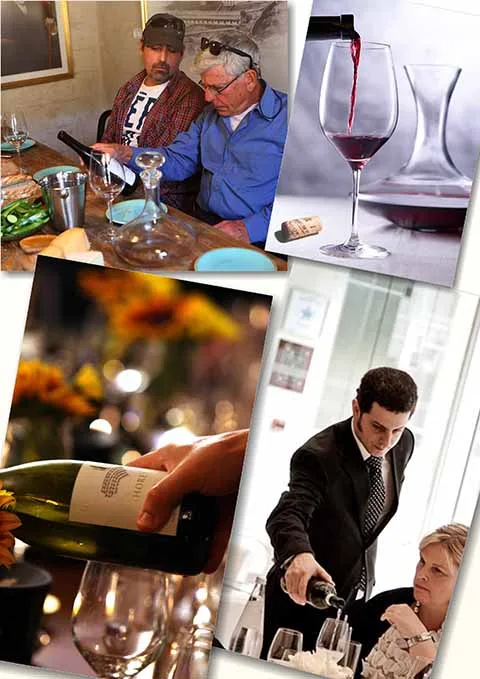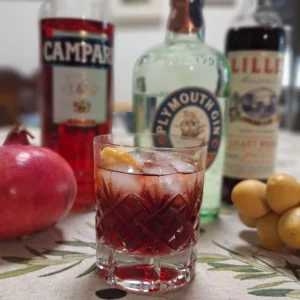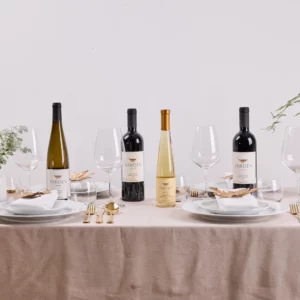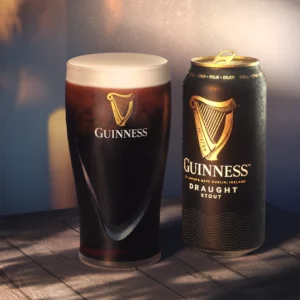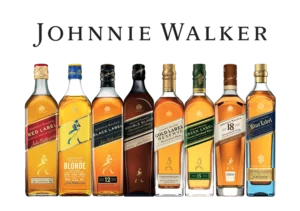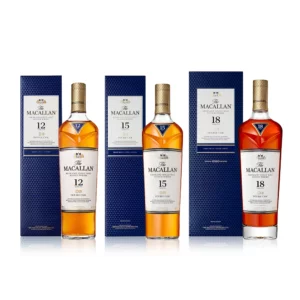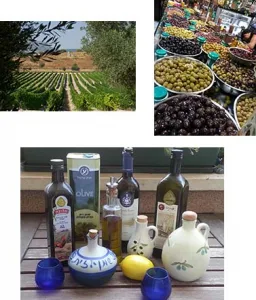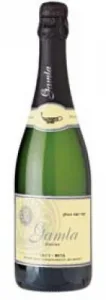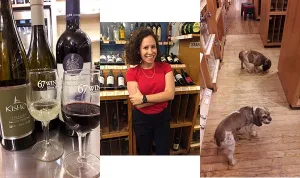Eating out with family, friends, food & wine is my favorite pastime. If there is a family celebration or just a need to break the routine, I do not hesitate and would rather book a restaurant than almost anything else. Many people are more likely to drink wine at a restaurant than at home.
Wine is made to be enjoyed with food and good company. It is not made to be tasted in formal tastings, at winery visitors’ centers, at festivals or exhibitions. It is simply at its best in the restaurant situation with the ambiance and service thrown in. Wine, food & friends is a Holy Trinity, like a three legged stool. If one leg is missing, it all collapses.
Going to a restaurant is a special occasion, yet choosing a wine is a hazard for most people. You receive a wine list full of names you may not know, at prices you could not conceive of paying. It is important not to panic. If you manage to order food off a menu with pretentious descriptions, then you can manage to order wine. Try and find the type of wine you like and the right price point you can afford. Often at the beginning of the list there are wines by the glass or bottles at more reasonable prices. A restaurant with a good wine by the glass program will usually choose them with care and look after them well once they are open. It is fun to order a few different glasses and share them and if matching wines to dishes is your thing, then, it is easier to do it by the glass as everyone is likely to order something different.
You can ask the sommelier, wine waiter or regular waiter to help direct you to what you will like. For that you need to start a conversation and open up. Only the very bad waiter staff will respond badly. Never feel embarrassed by a superior attitude of the wine server. They may know less than you do, but the chances are they really want to help. They have one advantage over you. They should know the wines on the list, so they can at least give advice. If you want more of an explanation of a particular dish on the A La Carte menu, most people have no qualms about asking. So you shouldn’t suddenly be shy from asking for help or an explanation regarding the wine.
I always recommend people to not be afraid to bring their own bottle. Everyone has a valued wine stored at home for ‘that special occasion.’ Often it is left waiting because the ideal ‘special’ occasion never arrives, and by the time you open it, the wine is past it. A corkage fee may be charged, which could range from an acceptable 35 shekels to a more unacceptable 75 shekels, but with winery mark ups, it usually pays. If you say bring a red and yet also buy a white, a reasonable restaurant will waive the corkage. Many people find a corkage fee hard to justify but it is only a payment for the service, the glassware, opening the bottle and clearing up afterwards.
It is important to know what you like. Never be ashamed of it, even if you feel the wine intelligentsia will frown out you. If you prefer a wine like Blue Nun or Lambrusco….or for that matter ice cubes in your red wine, it is your prerogative as the customer. The wine waiter may grimace, but that reflects on his professionalism. The customer is always right.
Everyone is always concerned about matching food with wine. It is always a big concern to the person ordering. The secrets are to match the wine to intensity or flavors of the dish or its dominant ingredients, or to provide a contrast it. The classic matching of flavors is say matching a buttery chardonnay with a fish in a buttery sauce. Contrast may be explained by matching smoked salmon with dry wine with prominent acidity.
A full bodied dish needs a full bodied wine and a delicate dish needs a delicate wine. There is not a right match which gives a great deal of leeway for experimentation without fear of putting ones foot in it. It becomes more complicated with a number of diners all eating different dishes, but never fear. You can always ask your fellow diners what they like, starting with red or white, to help you on your way. However don’t take it all too seriously. Good wine goes with good food…and it doesn’t really matter. How many times have I written ‘Match the wine to mood, not to food.
The tasting procedure is an ordeal for some. Captains of industry, even CEO’s, can be awed and get nervous by the simple process of tasting the wine. You choose the wine. The waiter comes to show you the bottle.
You can then confirm it is what you ordered. The waiter will then open it in front of you, taking off the capsule tidily, then removing the cork. He may pass you the cork as though he is giving you the crown jewels. You can look at it wisely, turn it around in your fingers and sniff it. You will look like a big expert. However I have never smelt a cork that smells nice. It is just a guide. If it is wet through or crumbly, or smells of wet newspaper, it is a sign that something may not be right with the wine, but the proof of the pudding is in the eating. It is only by nosing and tasting the wine that you will know.
The waiter will ask if you want to taste the wine. This is not for you to give a comment if you like it or not, but really just for you to check the wine is not off and that it is at the correct temperature. A swirl and a sniff is usually enough to give you all the information you need, followed by a taste. Then you simply nod and say it is ok. It is part of the theatre of pouring wine. Alternatively, when asked if you want to taste the wine you can always say: “no thank you” and the waiter can simply pour it.
If you think the wine is faulty, don’t feel pressurized. The wine is being tested not you. Simply ask the wine waiter to taste it and ask for their opinion. The over used phrase ‘this wine is corky’ does not mean there a bits of cork floating in the wine, nor does it cover every wine fault. It usually means the wine smells of wet cardboard and it obscures any fruit. You can send it back with confidence. You don’t have to pay for an off wine.
The person who orders is normally the one invited to taste and there should be no hint of sexism. If a woman orders, she should be the one to taste. Stuck up, traditional restaurants that only offer men to taste are forty years out of date. In a posh restaurant with a trained sommelier, the wine professional may taste your wine for you. This is not the time to shout “Oy, leave my wine alone!” He simply does not want to serve a bad wine and is checking for you.
When they pour, don’t feel aggrieved if you get given less than half a glass. This is the accepted way to give you room to aerate the wine. You are not being short changed. Glasses are bigger these days than the smaller paris goblets that used to be everywhere.
The main problem in restaurants is that red wines are served too warm and white wines too cold. Don’t be afraid of asking for an ice bucket for your red wine for five minutes to slightly chill it. With our high alcohols and warm climate, red wines can lose shape if served too warm. Service at room temperature is certainly passé. Likewise if the white is too cold, it kills the flavor. So in this instance, you might request the wine is not put in an ice bucket.
Even in good restaurants they ram the bottle into a half empty ice bucket, and are surprised it does not have an immediate effect. The secret is to fill up the ice bucket with water after the ice and bottle are inserted. It is the ice that makes the water cold, the water makes the bottle cold. A pinch of salt will also make the process quicker. So don’t be afraid to ask your waiter to add water to the ice bucket up to the top, so the bottle is well covered.
The thorny issue of pricing is always controversial, but this is a guide. A glass of wine normally costs the price of the bottle at cost. A wine is normally marked up times three. You should aim to pay for a bottle the same as what one person’s meal will cost. Most important is to decide what you want to pay and stick to it.
All you then have to decide is whether to drink something new or what you know and like. And then sit back and enjoy. Don’t be stressed by the wine. Allow yourself to enjoy the experience!
Adam Montefiore has been advancing Israeli wines for over 30 years. He is known as the ‘ambassador of Israeli wine’ and is the wine writer for the Jerusalem Post.
www.adammontefiore.com


